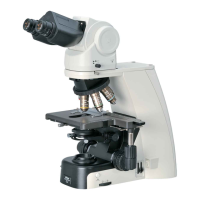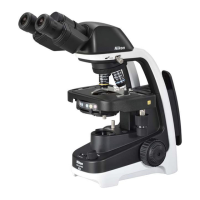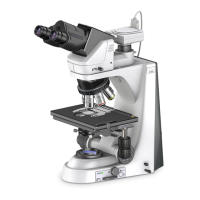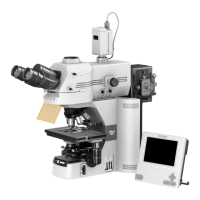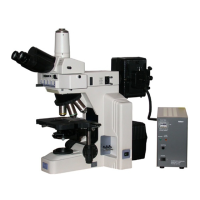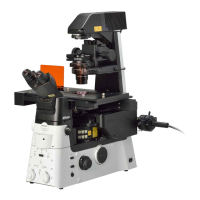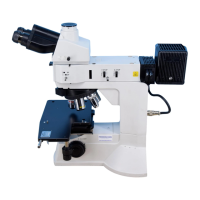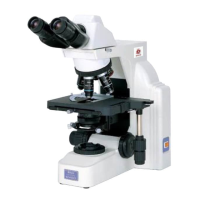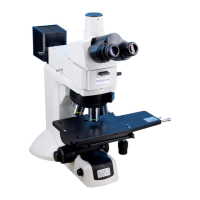Chapter 2 Individual Operations
47
Chapter 2
Individual Operations
13
Water Immersion
An objective with a “WI” or “W” marking is a water-immersion objective. Such an objective is used with immersion water
(distilled water or physiological saline) applied between the specimen and the tip of the objective. Microscopy procedures
are the same as for oil-immersion objectives.
Since water evaporates readily, monitor the immersion water during observation. Avoid using too much water, since
excess water will flow onto the stage and around the condenser, promoting corrosion.
Cleaning of water
After use, wipe off the water from the tip of the objective and condenser, then follow up by wiping with absolute alcohol.
If you observe water stains, apply a small amount of neutral detergent and wipe gently, then follow up with absolute
alcohol.
14
Tips for Phase Contrast Microscopy
Phase contrast microscopy is suitable for observation of clear and colorless specimens, undyed or lightly colored
specimens, decolored specimens, and ultrathin slices for electron microscopes. The phase contrast method is not suitable
for graded or hard dyed specimens.
A phase contrast image appears differently depending on the phase contrast or shape of the specimen, and the properties
of the objective. Note the following when you prepare the specimen or select a Ph objective.
Select a specimen for which the center of the Ph annular diaphragm is not misaligned.
The center of the Ph annular diaphragm will be misaligned when observing a specimen that causes scattered light or
generates a lens or prism effect. In particular, with live and thick specimens, oversized specimens, and specimens using a
microplate, the center will be misaligned due to the lens or prism effect, making the specimen difficult to observe.
Ph objective and specimen
Ph objectives include “achromatic”, “plan achromatic”, “plan flour”, and “plan apochromatic” objectives depending on how
much the chroma aberration and field curvature are adjusted. These lenses also are further subdivided into several types
depending on the properties of the internal phase plate. For favorable microscopy results, the phase contrast amount of the
specimen must match the properties of the phase plate. See the table below for the use properties of the Ph objectives.
When using a dark contrast Ph objective, make sure that the phase contrast of the specimen does not exceed the allowed
phase contrast amount (latitude). If the phase contrast amount of the specimen is greater than the allowed phase contrast
amount, observation is not possible as the image will be illuminated brighter than the background.
You can increase or decrease the phase contrast by the thickness of the specimen, and the refraction index of the
mounting agent or culture solution when preparing a phase contrast specimen.
A specimen with weak contrast under a DLL objective may yield better result under a DM objective.
Use Properties of Ph Objectives
Ph contrast
objective
Appearance Contrast Latitude Usage example
DLL
DL
Intermediate
(with
broader
usage)
Phase contrast
and absorbing
object
(chromosome) in
low and
intermediate
latitude
Bacteria's spore, general
live bacteria, slightly thick
specimen, bacteria, dyed
specimen, egg, fat particle,
crystalline, etc.
Dark
contrast
DM
Generally, an object with larger
phase contrast appears darker.
Therefore, the image is shown in
black in a relatively brighter field
of view, similar to the one
observed with bright-field
microscopy.
Suitable for
detailed
observation
mainly using
micro
contrast.
High
(with
relatively
narrower
usage)
Transparent object
in low latitude
Bacteria and protozoal
flagellum, fibrin basic fiber,
fine granule,
mounting-agent-selective
slice, ultrathin slice, etc.
Bright
contrast
BM
Generally, an object with larger
phase contrast appears brighter.
Therefore, the image is shown
brighter in a relatively darker
field of view, similar to the one
observed with dark-field
microscopy.
Suitable for morphology,
detection, and calculation
of fine fiber and granule
mainly using macro
contrast.
Almost all areas
Bacteria and protozoal
flagellum, fibrin basic fiber,
fine granule, blood cell
calculation, etc.
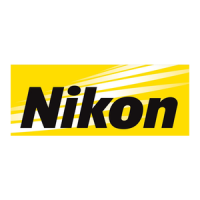
